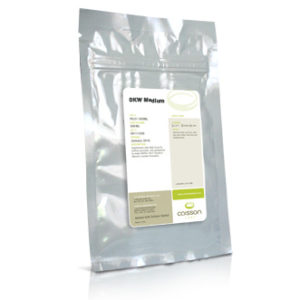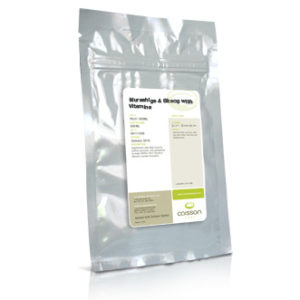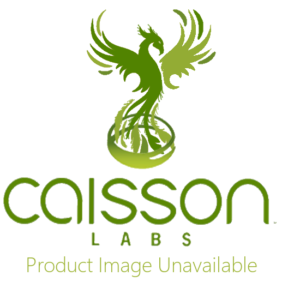Plant Preservative Mixture (PPM™)
Broad-spectrum biocide/fungicide for plant tissue culture.
The procedures described below are generic. Slight modifications might be needed for your specific plant species. Using Plant Preservative Mixture (PPM™) significantly simplifies the tissue culture working procedures as follows:
- Media containing Plant Preservative Mixture may be dispensed outside the laminar flow hood (LFH) exposed to the ambient air. The plates should be covered soon after agar solidification. In the event that media dispensing is done by a pump, we recommend passing autoclaved hot water through the hoses prior to and after media dispensing.
- Heat sensitive or heat stable liquid media containing Plant Preservative Mixture (PPM™) does not need to be filter sterilized or autoclaved provided that it will be stored in sterile containers and that the stock solutions are not contaminated. In rich media containing 200 mg/liter or more of amino acids or proteins, it is recommended to filter the media with the Plant Preservative Mixture (PPM™).
- If working in the LFH the utensils (forceps or scalpels) do not need to be flamed. They should be periodically dipped in 70% alcohol. The LFH does not need to be certified and the work can be done as well outside the LFH on a clean surface for a period not exceeding 1 hour.
- Plant Preservative Mixture (PPM™) is less effective when exposed to high density of bacteria or fungi spores found regularly on seed’s coat. For in vitro germination, seeds should be conventionally surface sterilized with EPA registered bleach. Therefore, in the presence of Plant Preservative Mixture (in the germination medium), the seeds can be rinsed under tap water in a non-sterile strainer and left to dry preferably in the LFH. If the utensil ends have touched active bacteria, fungi culture or otherwise suspected of being contaminated, they should be sterilized by autoclave or by use of an electric heating element.
- General Dosage levels: With the exception of endogenous contamination, the recommended dose range is 0.05%-0.2%. (For callus proliferation, organogenesis and embryogenesis, the recommended range is 0.05-0.075 %.) To eliminate higher endogenous contamination densities, higher doses of PPM are needed (see paragraph 6 below).
- Endogenous Contamination: (Having an internal cause or origin.
- For explants: gently and routinely shake / stir 1 cm. long explants (or shorter) for 4-12 hours in 45% v/v PPM™ solution supplemented as above with full MS strength basal salts without pH adjusting and without Tween 20. Without rinsing, insert into a medium supplemented with 0.05 – 0.1% PPM™ for herbaceous plants and 0.2% PPM™ for woody plants.
- For seeds, stir water rinsed seeds for 12-16 hours in 4% v/v non-pH adjusted PPM solution without Tween 20. Without rinsing place onto a medium supp. with 0.1% PPM.
- To eliminate Agrobacterium:
- To obtain better results after cultivation with Agrobacterium, add 0.2% PPM v/v directly from the bottle to an antibiotic cocktail.
GENERAL NOTES:
- For the first transfer following the sterilization with Plant Preservative Mixture (PPM™), we recommend to insert the explants entirely into a semi-solid medium.
- The 50% Plant Preservative Mixture (PPM™) solution can be reused but is not recommended. The number of uses depends on the volume of the explants treated and the inoculum density. Keeping the 50% Plant Preservative Mixture (PPM™) solution stored at 4ºC prolongs its activity. If necessary, prepare two Plant Preservative Mixture (PPM™) solutions: one to disinfect endogenous contamination and the second, to disinfect “in-culture” contamination. The second solution should be filtered after each treatment, using 0.2 micrometer Millipore. The filtration process can be done in non-sterile atmosphere. A single filter can be used for the entire “lifespan” of the solution.
- In cases where the treatment with 50% Plant Preservative Mixture (PPM™) is still insufficient, full strength Plant Preservative Mixture (PPM™) (100%) can be used. The treatment with 100% Plant Preservative Mixture (PPM™) is similar to the one described above for 50% Plant Preservative Mixture (PPM™), however, the exposure time should not exceed 10 minutes.
SUMMARY
Conditions in each lab may vary which could have a bearing on the effectiveness of Plant Preservative Mixture (PPM™). It is advisable to follow the above guidelines initially and adjust parameters accordingly.
When used as recommended:
- Plant Preservative Mixture (PPM™) is effective against airborne contamination, waterborne contamination and contamination introduced from human contact.
- If used correctly, Plant Preservative Mixture (PPM™) will eliminate endogenous contamination from explants.
- At recommended doses (0.5 – 2ml/l), Plant Preservative Mixture (PPM™) does not impair in vitro seed germination, callus proliferation, callus regeneration, and axillary or adventitious buds’ induction.
TERMS & DEFINITIONS
- Agrobacterium is a genus of Gram-negative bacteria established by H. J. Conn that uses horizontal gene transfer to cause tumors in plants. Agrobacterium tumefaciens is the most commonly studied species in this genus.
- Endogenous Contamination – Having an internal cause or origin
- PPM™ – Plant Preservative Mixture™





